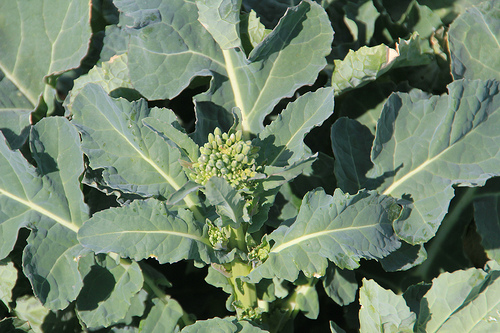
Agricultural News
OSU's Chad Godsey Offers Canola Planting Strategies into No Til Ground
Thu, 25 Jul 2013 15:08:43 CDT
 Planting winter canola into wheat stubble can be accomplished successfully if you follow some simple directions, according to Oklahoma State University cropping systems specialist Chad Godsey.
Planting winter canola into wheat stubble can be accomplished successfully if you follow some simple directions, according to Oklahoma State University cropping systems specialist Chad Godsey.
Godsey, speaking at the ninth annual Oklahoma-Kansas Winter Canola Conference here, explained planting canola in notill situations has created winter kill problems in the last two or three years. However, research conducted by Godsey and other OSU agricultural specialists shows farmers can successfully grow canola in notill fields if they just follow a few simple practices.
Special attention should be given to seeding depth, Godsey said. Seed should be planted from one half to one inch deep in the soil. If the seedbed is uneven, plant the tiny canola seed at one inch to make sure there is good seed to soil contact.
Godsey emphasized the importance of keeping residue from the harvested wheat away from the row where the canola is being planted. He indicated a producer should make sure combines spread wheat straw residue evenly across the harvester's header to avoid clumps of residue in the field. "Running a harrow over the field before planting or even burning the extra residue are ways to ensure clean planting rows," he said.
Farmers should choose canola varieties to plant with excellent winter hardiness and low crown development, he said. During winter dormancy when the crop is not growing, it stays alive on the nutrients stored in its root system, he explained. If cold air and frost can move beneath the plant's crown and the soil, the canola plant's survival can be severely affected. Canola varieties with low crowns grow closer to the soil to better protect the plant during the cold winter months.
Another option for farmers who practice notill and grow winter canola in rotation with their winter wheat is to increase their canola seeding rates by 15 to 20 percent to better ensure establishing a crop. Increasing the amount of seed planted is a good practice when farmers have a heavy amount of wheat straw residue left in the field, Godsey said.
Switching to "wavy" coulters on the canola planter is a good way to remove more residue from the row where the canola is planted, he said. Using these coulters will disturb the soil in the row and push any extra crop residue out of the way, he said.
Be sure to set sufficient down force on planters before planting canola to get correct planting function, he said. Godsey also suggested farmers should "get off the tractor frequently" to make sure the planter is giving a correct seeding rate and depth because soil conditions change across each field.
In the Southern Plains, farmers are encouraged to plant winter canola in a "planting window" of Sept. 10-Oct. 10. There is a reason for these dates, he said, and a good practice to follow is to plant early in that window to ensure a good stand.
Recent research conducted by Godsey and other OSU agronomists indicate planting winter canola can be a problem in fields where notill has been practiced for less than three years. "It takes time for fields to adjust to no plowing," he said. "Fields where notill has been practiced for more than three years have better soil structure ad lower soil bulk densities to promote better plant root growth. Fields with compacted soil have high "bulk density," he said. It can take several years for soil to develop better soil structure after notill farming begins, he said.
Growing winter canola can be profitable in many ways for farmers in the Southern Plains, but it is a crop which demands more care than a crop like winter wheat. Farmers need to be aware of the needs of winter canola in order to successfully grow it an individual crop along with the benefits derived when it is grown in rotation with winter wheat.
Information presented at the canola conference by OSU agricultural economist Rodney Jones shows canola stands on its own as a money crop for farmers to grow.
Jones shared a Roundup Ready canola budget he had prepared showing a net return per acre of $308.08 for canola production. This takes in net returns to land, fixed costs, labor and management, he said. In contrast, Jones indicated, a grain-only wheat budget of continuously grown wheat had a net return to land, fixed costs, labor and management of $99.29 per acre. Growing wheat in a wheat-wheat-canola rotation yielded a per acre return of $121.42 per acre.
Winter canola has been grown successfully in the Southern Plains for nearly a decade now. It was developed from spring canola varieties grown in Canada and northern US states to combat perennial weed infestation in continuously grown winter wheat. With different plant characteristics and producing highly-sought canola oil for cooking oil and biofuel production, the crop's acreage has nearly doubled each year since its inception. Price per bushel paid for canola at harvest has exceeded prices paid for wheat by three to four dollars per bushel.
WebReadyTM Powered by WireReady® NSI
Top Agricultural News
More Headlines...



















